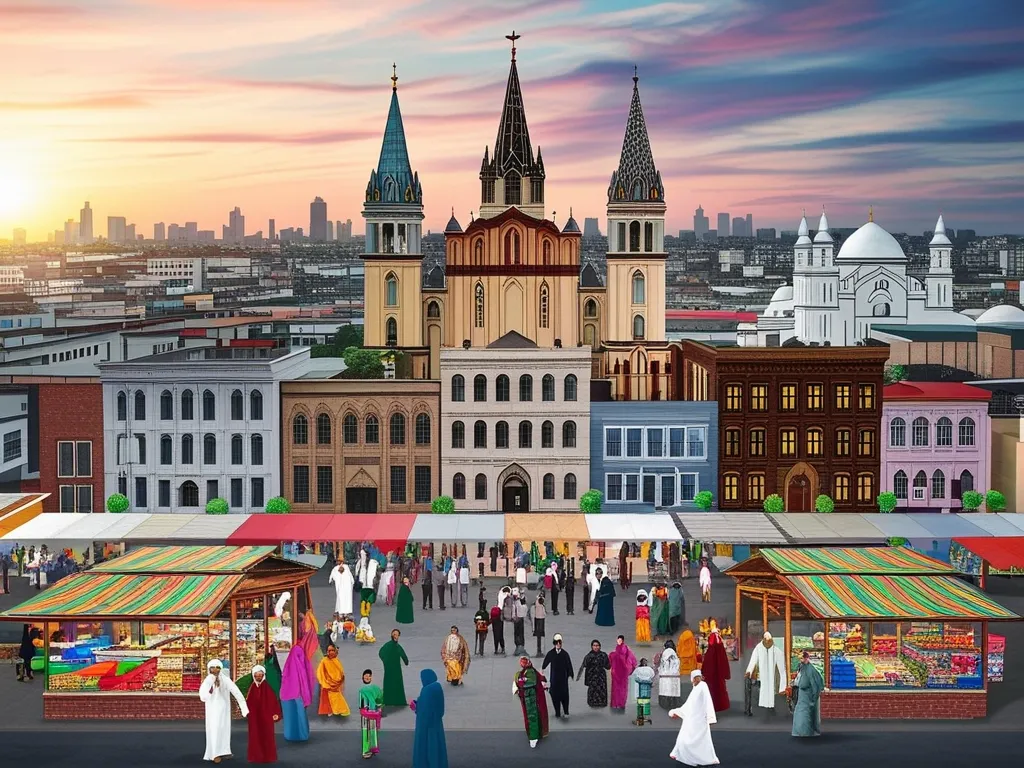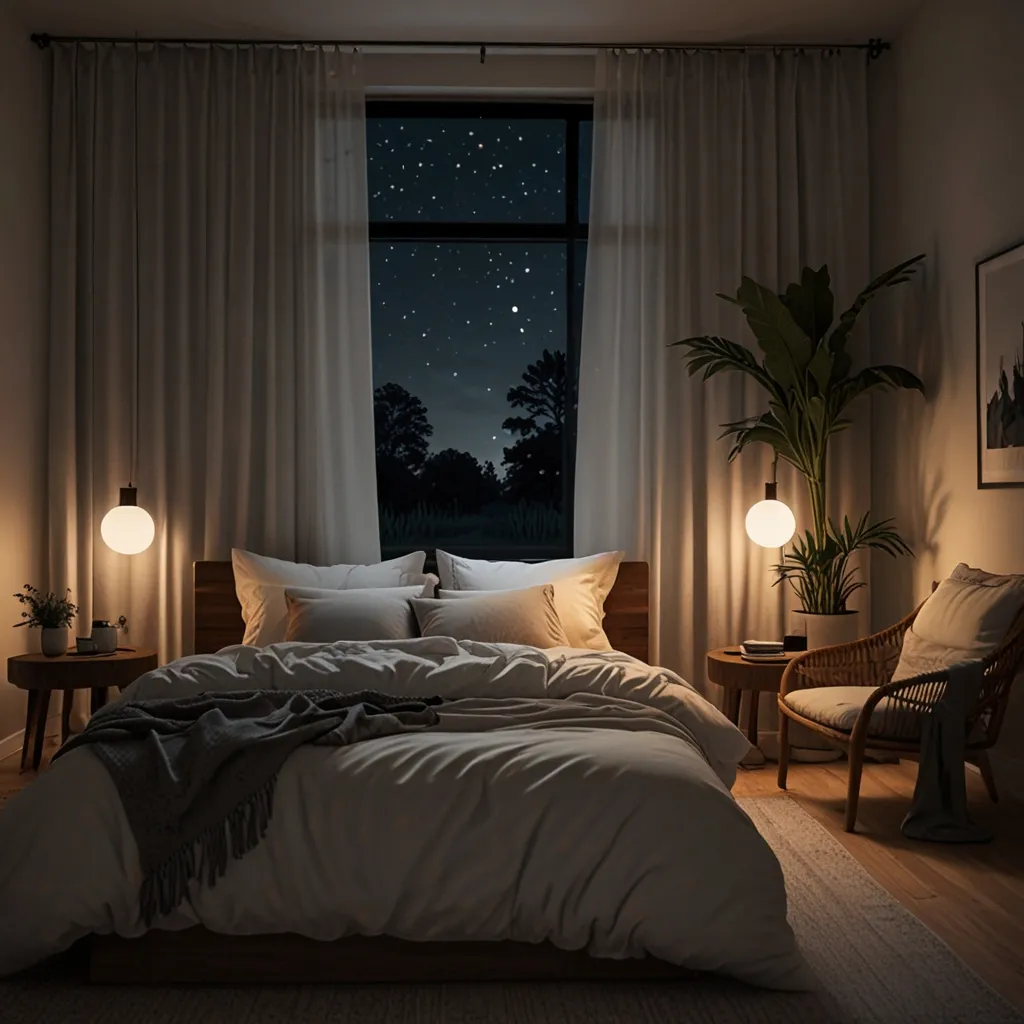As I walk through the bustling streets of a city, it’s easy to overlook the subtle yet profound influence of religion and culture on the urban landscape. However, if you look closely, you’ll discover that the very fabric of our cities is woven from the spiritual and cultural identities of their inhabitants.
One of the most evident ways this manifests is through zoning laws and the allocation of space for religious buildings. In many cities, you’ll find that specific areas are designated for the construction of mosques, churches, synagogues, and temples. These spaces are not just places of worship but also serve as community hubs, reflecting the cultural and religious diversity of the population.
For instance, in cities with significant Muslim populations, the call to prayer from minarets becomes an integral part of the urban soundscape. The architecture of these mosques often blends traditional Islamic designs with modern elements, creating a unique visual identity that stands out in the cityscape. Similarly, in areas with a strong Jewish presence, synagogues and yeshivas are built with careful attention to traditional architectural styles, such as the use of domes and intricate stone carvings.
The influence of religion on urban planning extends beyond the physical structures themselves. It also shapes the way communities interact and the services they provide. For example, many religious institutions offer social services, such as food banks, healthcare facilities, and educational programs, which are essential to the well-being of the community. These services often fill gaps in public provision, making the city a more livable and compassionate place.
Architectural styles inspired by sacred traditions are another fascinating aspect of how faith influences urban design. In Germany, for instance, the transformation of religious architecture since 1990 has been remarkable. New constructions, reused buildings, and even demolished structures have been repurposed to reflect the changing religious landscape. Mosques, churches, and synagogues are not just built for worship but also as symbols of community resilience and cultural heritage.
The intersection of tourism and religion also plays a significant role in shaping urban spaces. Many cities have developed as major tourism destinations due to their sacred sites and spiritual significance. Pilgrimage routes, such as those in Hinduism, Islam, and Christianity, attract millions of travelers each year. These pilgrims not only visit sacred sites but also contribute to the local economy and cultural exchange. For example, the city of Varanasi in India is a prime example of how religious tourism has shaped its urban landscape, with ghats along the Ganges River and numerous temples that cater to both locals and visitors.
Urban planners face unique challenges when managing the complex and morally heterogeneous cities of today. Spatial disputes often arise from religious-secular entanglements, such as opposition to the construction of religious spaces or religious objections to certain urban projects. For instance, the construction of a mosque in a predominantly Christian neighborhood can spark heated debates and community resistance. Similarly, proposals for buildings that some religious groups consider immoral, such as casinos or strip clubs, can lead to significant community backlash.
Despite these challenges, urban planning can also be a powerful tool for fostering social justice and community cohesion. Progressive religious activism has long been a driving force behind urban initiatives aimed at addressing issues like racism, poverty, and environmental degradation. For example, faith-based organizations often lead community development projects, such as affordable housing initiatives and community gardens, which help bridge the gaps between different religious and secular communities.
The concept of “sacred spaces” goes beyond just physical buildings; it encompasses areas of special spiritual significance to communities. These spaces can be natural sites, such as mountains or rivers, or man-made structures like tombs or shrines. Protecting these sacred spaces is crucial not only for the religious communities that venerate them but also for preserving cultural heritage. International human rights frameworks, particularly the right to freedom of religion or belief, have been invoked to protect these spaces from encroachment or destruction.
In many cities, the blending of different cultural and religious identities creates a vibrant tapestry of traditions. For example, in Singapore, the city’s multicultural policy ensures that public spaces reflect the diversity of its population. You can find Buddhist temples, Hindu shrines, mosques, and churches all within a short distance of each other, each contributing to the city’s rich cultural mosaic.
As I reflect on the intricate ways religion and culture shape our cities, I am reminded of the profound impact these elements have on our daily lives. From the architectural styles that dominate the skyline to the community services provided by religious institutions, the influence of faith is omnipresent. It is this interplay between the spiritual and the physical that makes our cities not just places to live but vibrant, living entities that reflect the diverse identities of their inhabitants.
In conclusion, the next time you walk through a city, take a moment to appreciate the subtle yet powerful ways in which religion and culture have shaped its landscape. Whether it’s the call to prayer from a mosque, the intricate carvings on a synagogue, or the bustling activity around a Hindu temple, these elements are more than just architectural features—they are the heart and soul of the city itself. They remind us that our urban spaces are not just built for functionality but are also reflections of our deepest beliefs and cultural heritage.






